Ottokar II (Czech: Přemysl Otakar II; c. 1233 – 26 August 1278), the Iron and Golden King, was a member of the Přemyslid dynasty who reigned as King of Bohemia from 1253 until 1278. He also held the titles of a Duke of Austria from 1251, Duke of Styriafrom 1260, as well as Duke of Carinthia and Margrave of Carniola from 1269.
With Ottokar's rule, the Přemyslids reached the peak of their power in the Holy Roman Empire. His expectations of imperial crown, however, were never fulfilled.
Ottokar was the second son of King Wenceslaus I of Bohemia. Through his mother, Kunigunde, daughter of Philip of Swabia, he was related to the Hohenstaufen dynasty of Holy Roman Emperors, which became extinct in the male line upon the execution of KingConradin of Sicily in 1268.

Agnes of Kuenring (born about 1236), was an Austrian noblewoman, courtierwoman of Queen Margaret of Austria and mistress of her husband, King Ottokar II of Bohemia. She was the first historically documented mistress of a Bohemian sovereign.
Rudolf I, also known as Rudolf of Habsburg (German: Rudolf von Habsburg, Czech: Rudolf Habsburský; 1 May 1218 – 15 July 1291), was Count of Habsburg from about 1240 and was elected King of Germany (King of the Romans) from 1273 until his death.
Rudolf's election marked the end of the Great Interregnum in the Holy Roman Empire after the death of the Hohenstaufen emperorFrederick II in 1250. Originally a Swabian count, he was the first Habsburg to acquire the duchies of Austria and Styria against his mighty rival, the Přemyslid king Ottokar II of Bohemia, whom he defeated in the 1278 Battle on the Marchfeld. The territories would remain under Habsburg rule for more than 600 years, forming the core of the Habsburg Monarchy and the present-day country ofAustria.
Rudolf was the first German king of the Habsburg dynasty, and he played a vital role in raising the comital house to the rank ofImperial princes. He was also the first in a number of late medieval count-kings, so-called by the historian Bernd Schneidmüller, from the rivalling noble houses of Habsburg, Luxembourg, and Wittelsbach, all striving after the Roman-German royal dignity, which ultimately was taken over by the Habsburgs in 1438.
Rudolf was born on 1 May 1218 at Limburgh Castle near Sasbach am Kaiserstuhl in the Breisgau region of present-day southwestern Germany.[1] He was the son of Count Albert IV of Habsburg and Hedwig, daughter of Count Ulrich of Kyburg.
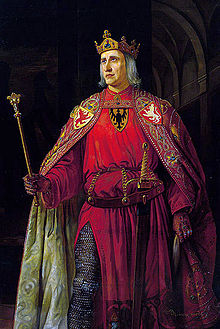
Gertrude of Hohenberg (c. 1225 – 16 February 1281) was the first wife of Rudolph I of Germany.[1]
Gertrude was born to Burkhard V, Count of Hohenberg (d. 1253), and his wife, Matilda of Tübingen. In 1245

Władysław of Opole (Polish: Władysław opolski) (c. 1225 – 27 August/13 September 1281/2) was a Duke of Kalisz during 1234–1244, Duke of Wieluń from 1234 to 1249 and Duke of Opole–Racibórz from 1246 until his death.

Euphemia of Greater Poland (Polish: Eufemia Odonicówna) (c. 1230 – 15 February after 1281), was a Polish princess member of the House of Piast from the Greater Polandbranch and by marriage was Duchess of Kalisz, Wieluń and Opole-Racibórz.
Euphemia was the youngest child of Władysław Odonic and his wife Hedwig, disputed daughter of Mestwin I, Duke of Pomerania and Swinisław, daughter of Mieszko III the Old.
Konrad II of Czersk (pl: Konrad II czerski; ca. 1250 – 24 June 24/21 October 1294[1]), was a Polish prince member of the House of Piast, Duke of Masovia during 1264-1275 jointly with his brother, since 1275 sole ruler over Czersk and Duke of Sandomierz during 1289.
He was the eldest son of Siemowit I of Masovia and Pereyaslava, a daughter of Prince Daniel of Halych.

Jaroslav III di Vladimir (in russo: Ярослав III Ярославич?, traslitterato: Jaroslav III Jaroslavič; ... – 1272) Principe di Tver' dal 1247al 1272, Gran Principe di Vladimir dal 1263 al 1272, figlio di Jaroslav II.

Dimitrij Borisovič Principe di Rostov (Rostov, 11 settembre 1253 – Rostov, 1294) è stato un nobile russo.
Fu il maggiore dei tre figli del principe Boris Vasilkovič e della principessa Maria Yaroslavna Murom.
León I de Galicia (en ucraniano, Лев Данилович, Lev Danílovich) (c. 1228 – c. 1301) Kniaz de Belz (1245–1264), Kniaz de Peremyshl, Príncipe de Hálych (1264–1269) y Rey de Rus (1269–1301), Gran Príncipe del Rus de Kiev (1271–1301), Príncipe de Galitzia-Volynia (1264 - 1301).
Era hijo del rey Daniel de Galitzia y su primera esposa Ana de Nóvgorod o Anna Mstislavna. Sus abuelos maternos fueron Mstislav el Valiente y la hija María de Kotian (en:Köten), Kan de los cumanos. Por tanto, era primo hermano de Alejandro Nevski ya que su madre, Anna Mstislavna, era hermana de Rostislava Mstislavna, madre de Alejandro, siendo ambas hijas de Mstislav Mstislávich el Valiente y la princesa cumana.

Beata Constanza de Hungría (en húngaro: Boldog Konstancia) (1237-1276) princesa real húngara, duquesa consorte de Galitzia.
Constanza fue hija del rey Bela IV de Hungría y de María Laskarina. Fue sobrina de santa Isabel de Hungría, la sexta hija del matrimonio de sus padres, y hermana de santaMargarita de Hungría, la beata Yolanda de Polonia y de la reina santa Cunegunda de Polonia. Después de la invasión de los tártaros a Hungría en 1241, el rey Bela IV se esforzó por fortalecer los contactos dinásticos con sus vecinos. Ante esto en 1252 entregó a Constanza como esposa al duque León I de Galitzia, de la familia de los Rúrikovich. Éste, en 1230, a petición de los tártaros hizo demoler todos los lugares amurallados. La difícil situación en la que se hallaba el duque de Galitzia causó solo penas a Constanza. Su esposo era violento y de naturaleza indomable, haciendo sufrir constantemente a la princesa real húngara. En 1266 quedó viuda y se retiró como monja a un convento en Sandra. Ahí murió el 8 de mayo de 1276. Su único hijo, Jorge continuó con las siguientes ramas de los Rúrikvich en Galitzia, la cual se disolvió con la rama de los Piast y posteriormente con la de los Habsburgo.
Constanza fue beatificada en 1674.
Wasilij/Vasily /Vsevolod Konstantinovich Knyaz Rostowskij 1208-38 e Konstantin of Rostov Grand Prince of Vladimir y Агафья Мстиславна Ростовский
Maria Mikhailovna 1210-71 Saint Mikhail of Chernigov y Olena Maria Romanovna Maria Vladimiro-Volynska
Yaroslav Yurevich Knyaz Muromskij (Yurevich) 1214-58 Yurij Dawidovich, Knyaz Muromskij y NN riurikova
Alberto IV (c. 1195-Ascalón, 22 de noviembre de 1240)1 fue un conde de Habsburgo y landgrave de la Alta Alsacia, hijo deRodolfo II el Anciano y de Inés de Staufen.
Helviga de Kiburgo, condesa de Kybourg, hija de Ulrico III de Kiburgo y de Ana de Zahringen
Burkhard V, conde de Hohenberg
Burkhard V, Graf von Hohenberg
Mechtild von Tübingen (Scherre von Tübingen), Gräfin 1195-1276 e Rudolf II. Pfalzgraf Scherre von Tübingen yAdélaïde von Wurttemberg
Meinhard I (c. 1200/1205 – 22 July 1258), a member of the House of Gorizia (Meinhardiner), was Count of Gorizia (as Meinhard III) from 1231 and Count of Tyrol from 1253 until his death.
He was the son of Count Engelbert III of Gorizia and his wife Matilda, a sister of the Andechs duke Berthold IV of Merania

Adelaide, daughter of Albert IV, Count of Tyrol
Otto II of Bavaria (German: Otto II der Erlauchte , Herzog von Bayern, Pfalzgraf bei Rhein, 7 April 1206 in Kelheim – 29 November 1253) known as Otto the Illustrious was the Duke of Bavaria and Count Palatine of the Rhine (see Electorate of the Palatinate). He was a son of Louis I and Ludmilla of Bohemia and a member of the Wittelsbach dynasty.
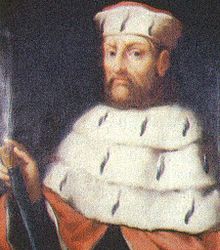
Agnes of the Palatinate (1201–1267) was a daughter of Henry V, Count Palatine of the Rhine and his first wife Agnes of Hohenstaufen, daughter of Conrad, Count Palatine of the Rhine.[

Luis I, duque de Baviera (en alemán Ludwig I der Kelheimer, Herzog von Bayern, Pfalzgraf bei Rhein) (Kelheim, 23 de diciembre de1173 – Kelheim, 15 de septiembre de 1231) fue un duque de Baviera desde 1183 y Conde palatino del Rin (título que significaba ser elector del Sacro Imperio Romano) desde 1214.
Era hijo de Otón I de Wittelsbach y su esposa Inés de Loon.
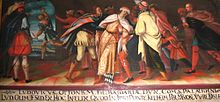
Agnes of Hohenstaufen (1176 – 7 or 9 May 1204 in Stade) was the daughter of Count Palatine Conrad of the Rhine and from 1195 to 1204 Countess Palatine of the Rhine, as the wife of Henry V, Count Palatine of the Rhine.
Jean d'Avesnes 1218-57 Bouchard IV, seigneur d'Avesnes y Margaret II, countess of Flanders
Aleida van Holland 1234-84 Floris IV, count of Holland y Machteld, countess of Holland

Enrique V (1216 - 24 de diciembre de 1281), llamado el Rubio, fue el conde de Luxemburgo, Laroche y Arlon desde 1247 hasta su muerte, y el conde de Namur entre 1256 y 1264 como Enrique III. Era hijo y sucesor de Waleran III de Limburgo yErmesinda de Luxemburgo.

Margarita de Bar, hija de Enrique II de Bar y Felipa de Dreux que era la bisnieta del rey Luis VI de Francia.
Felipe III de Francia,1 llamado el Atrevido, (en francés: Philippe le Hardi) (Poissy, Isla de Francia, 30 de abril de 1245 –Perpiñán, Rosellón, 5 de octubre de 1285), fue el décimo rey de Francia (1270–1285) perteneciente a la dinastía de los Capetos.
Nació el 30 de abril de 1245 en la ciudad de Poissy. Fue el cuarto vástago y el segundo hijo varón de Luis IX y de Margarita de Provenza.
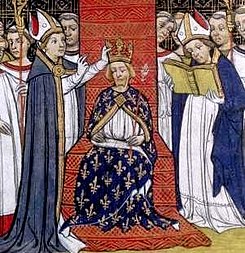
Fue hija de Jaime I el Conquistador, rey de Aragón y conde de Barcelona, y de su segunda mujer Violante de Hungría. Fue hermana de Pedro III de Aragón y de Jaime II de Mallorca. Sobrina por vía materna de Santa Isabel de Hungría.

Carlos II de Anjou, apodado el Cojo1 (1254–5 de mayo de 1309), era hijo y sucesor de Carlos I de Anjou. Su madre fue la condesa Beatriz I de Provenza. Su padre le concedió el título de príncipe de Salerno.
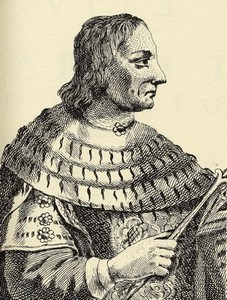
María (en húngaro: Mária nápolyi királyné, en italiano: Maria d'Ungheria) (1257- 25 de marzo de 1323), fue una princesa medieval húngara, hija del rey Esteban V de Hungría, esposa de Carlos II de Nápoles y Sicilia y reina consorte de Nápoles, y abuela del rey Carlos I Roberto de Hungría.
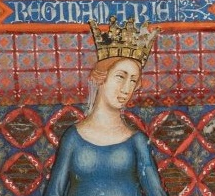
Baudouin d'Avesnes 1219-95 Bouchard IV, seigneur d'Avesnes y Margaret II, countess of Flanders
Félicité de Coucy de Vervins 1197-1241 Thomas de Coucy, seigneur de Vervins yMahaut de Rethel
Enrique III de Brabante, llamado el Piadoso, (c. 1231 - Lovaina, 1261), duque de Brabante de 1248 a su muerte, fue hijo deEnrique II, duque de Brabante, y de María de Hohenstaufen. Protector de las letras y de los poetas, fue también un destacadotrovador, conociéndose cuatro canciones escritas por él en lengua francesa.

Adelaida de Borgoña, Aleyde de Brabante,
Guido de Dampierre (en neerlandés, Gwijde van Dampierre) (h. 1226 – Compiègne, 7 de marzo de 1305) fue conde de Flandes (1251–1305) y marqués de Namur (1268–1297). Se encontraba prisionero de los franceses cuando sus flamencos los derrotaron en la batalla de Courtrai en 1302.
Guido era el segundo hijo de Guillermo II de Dampierre y Margarita II de Flandes

Wenceslao I Premyslid (en checo Václav I.) (1205 – 23 de septiembre de 1253) fue rey de Bohemia entre 1230 y 1253.
Wenceslao era hijo del Otakar I de Bohemia y Constancia de Hungría. Sus abuelos maternos eran Bela III de Hungría e Inés de Antioquía (Inés de Châtillon) era hija de Reinaldo de Châtillon y Constanza de Antioquía (príncipes de Antioquía).

Cunegunda de Hohenstaufen (1200 - 13 de septiembre de 1248) fue una noble alemana, reina consorte de Bohemia, la segunda hija de Felipe de Suabia y de su esposa, Irene Ángelo.1 Sus abuelos paternos fueron Federico I, emperador del Sacro Imperio Romano Germánico, y Beatriz I de Borgoña.2 Sus abuelos maternos fueron Isaac II Angelo, emperador bizantino, y su primera esposa Herina.3
Rostislav Mijáilovich (en húngaro, Rosztyiszláv,1 en búlgaro, ruso y ucraniano: Ростисла́в Миха́йлович) (luego de 12102 / c. 12253 -1262)4 fue un príncipe Rus' (miembro de la dinastía Rúrika), y dignatario del Reino de Hungría.1
Fue príncipe de Nóvgorod (1230), de Hálych (1236-1237, 1241-1242), de Lutsk (1240), y de Chernígov (1241-1242).2 5 Cuando no pudo consolidar su poder en Hálych, fue a la corte del Rey Bela IV de Hungría y se casó con su hija, Ana.1
Fue ban de Eslovenia (1247-1248), y luego se convirtió en el primer duque de Moesia (entre 1248 y 1262), gobernando así las regiones meridionales del reino.1 En 1257 ocupó Vidin y desde entonces se nombró a sí mismo zar de Bulgaria.6
Rostislav fue el hijo mayor del Príncipe Mijaíl Vsévolodovich (quien pudo haber sido príncipe de Pereyaslavl o de Chernígov cuando nació Rostislav) y su esposa Elena Románovna (o María Románovna),3 hija de Román Mstislávich, príncipe de Volynia y Hálych
Ana de Hungría (1226-1285) era una princesa húngara del Siglo XIII que fue dada en matrimonio al principe ruso Rostislav Mijaílovich que huyendo al exilio en Hungría ocupó varios cargos relevantes en el aparato administrativo del Reino húngaro.
Ana nació cerca de 1226 como hija del rey Bela IV de Hungría y su esposa María Laskarina. Entre sus hermanas se hallaban Santa Cunegunda de Polonia, Santa Margarita de Hungría, la beata Yolanda de Polonia y la beata Constanza de Hungría.
Barnim I the Good (c. 1217/1219 – 13 November 1278) from the Griffin dynasty was a Duke of Pomerania (ducis Slauorum et Cassubie) from 1220 until his death.
Son of Duke Bogislaw II and Miroslawa, daughter of Duke Mestwin I of Pomerelia, he succeeded to the Duchy of Pomerania-Stettinupon his father's death in 1220;[1]

Margareta (b. aft. 1231 - d. bef. 27 May 1261), probably a daughter of Nicholas I, Lord of Werle and member of theHouse of Mecklenburg
Vitslav II (ca. 1240 – 1302), variously called Vislav, Vizlav, Wislaw, Wizlaw and Witslaw in English sources (German: Wizlaw II) was a prince of Rügen.[1]
Vitslav was probably born between 1240 and 1245 as the son of Prince Jaromar II of Rügen and Euphemia, a daughter of Duke Swantopolk II of East Pomerania. After his father, who had taken part on the side of the church in battles in Denmark between the Danish royal house and the Archbishopric of Lund. When his father was stabbed to death by a woman in 1260 out of revenge, Vitslav became the reigning Prince of Rügen.
Agnes of Brunswick-Lüneburg, the daughter of Duke Otto I, the Child of Brunswick and Matilda of Brandenbur
Günther von Arnstein Graf von Lindow-Ruppin, Graf 1212-84 Gebhard von Arnstein Graf von Lindow-Ruppin, I
Euphemia von Rügen 1216 e Wizlaw I ( Vitslav I) av Rügen, Fürst y Margaretha Sverkerdtr.
Meinhard von Schladen, Graf 1229-1301 Heinrich von Schladen y Lukard NN
Adelheid von Warberg 1232-74 Hermann von Warberg y Luitgard von Dorstadt
Boleslao el Piadoso (en polaco: Bolesław Pobożny) (1224/27 - 14 de abril de 1279) fue duque de Gran Polonia durante 1239-1247 (según algunos historiadores durante 1239-1241 único duque de Ujście), duque de Kalisz durante 1247-1249, duque de Gnieznoen 1249-1250, duque de Gniezno-Kalisz durante 1253-1257, Duque de toda Gran Polonia y Poznań durante 1257-1273, en 1261 gobernador de Ląd, regente de los ducados de Mazovia, Płock y Czersk durante 1262 - 1264, gobernador de Bydgoszcz durante 1268-1273, duque de Inowrocław durante 1271-1273, y duque de Gniezno-Kalisz desde 1273 hasta su muerte.
Fue el segundo hijo de Vladislao Odonic, duque de Gran Polonia con su esposa Eduviges, que probablemente fue la hija del duqueMestwin I de Pomerania, o un miembro de la dinastía de los Přemyslidas
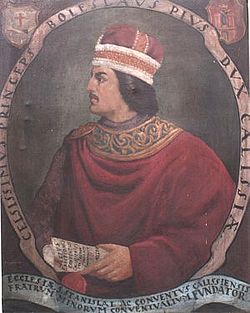
Beata Yolanda de Polonia (en húngaro: Boldog Jolán; en polaco:Jolenta Helena) (1235/39 – 11 de junio de 1298) princesa húngara. Hija del rey Bela IV de Hungría, hermana de Santa Kinga de Polonia y Santa Margarita de Hungría. Yolanda era sobrina de Santa Isabel de Hungría.
Yolanda nació cerca de 1235 en la ciudad de Esztergom como hija del rey Bela IV de Hungría y su esposa María Laskarina
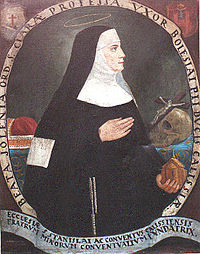
Juan I, príncipe de Mecklemburgo-Güstrow
Johann I, Fürst von Mecklenburg-Güstrow
Luitgard von Henneberg
Barnim I, duque de Pomerania
Barnim I., Herzog von Pommern
Marianna, princesa de Suecia
Marianna, prinsessa av Sverige
Membro della casata degli Ascanidi, Alberto era il figlio maggiore del duca Bernardo III di Sassonia e di Brigitta di Danimarca, figlia del reCanuto V di Danimarca
Elena di Brunswick-Lüneburg (18 marzo 1223 – 6 settembre 1273) fu una principessa del Brunswick-Lüneburg e per matrimonio divenneduchessa di Sassonia e langravia di Turingia.
Era figlia del duca Ottone I di Brunswick-Lüneburg e della consorte Matilde del Brandeburgo.
Magnus VI di Norvegia (in Lingua norrena Magnús Hákonarson), conosciuto anche con il soprannome di Magnus Lagabøter (il riparatore di leggi) (Tønsberg, 1º maggio 1238 – Bergen, 9 maggio 1280) fu re di Norvegia dal 1263 al 1280. Il miglior risultato da lui ottenuto fu la modernizzazione e la nazionalizzazione del codice di leggi norvegese. Grazie ad esso ottenne infatti il soprannome di "Riparatore di leggi".
Magnus Haakonsson era il figlio più giovane del re Haakon IV Haakonarson di Norvegia, che regnò dal 1217 al 1263 e sua moglieMargrét Skúladóttir

Ingeborg di Danimarca (1244(circa) – 24 marzo 1287(o 26 dello stesso mese)) principessa danese andò in moglie a Magnus VI di Norvegia divenendo Regina consorte di Norvegia, alla morte del marito giocò un ruolo di rilievo nel governo perché il figlio della coppia era ancora minorenne.
Ingeborg di Danimarca nacque attorno al 1244 da Eric IV di Danimarca e Jutta di Sassonia
Vitslav II (ca. 1240 – 1302), variously called Vislav, Vizlav, Wislaw, Wizlaw and Witslaw in English sources (German: Wizlaw II) was a prince of Rügen.[1]
Vitslav was probably born between 1240 and 1245 as the son of Prince Jaromar II of Rügen and Euphemia, a daughter of Duke Swantopolk II of East Pomerania.
Agnes of Brunswick-Lüneburg, the daughter of Duke Otto I, the Child of Brunswick and Matilda of Brandenburg
Birger Magnusson, más conocido como Birger Jarl (década de 1210 - Jälbolung, Västergötland, 21 de octubre de 1266.1Noble sueco, jarl a partir de 1248 hasta su muerte. Regente de Suecia desde 1250. Fue hijo de Magnus Minnisköld y de Ingrid Ylva.

Gerhard I von Holstein- Schauenburg 1232-90 Adolph IV, Herr von Schauenburg, Graf zu Holstein und Stormarn y Heilwig Gräfin von der Lippe
Elisabeth von Mecklenburg (Mecklenburg), Gräfin zu Holstein-Itzehoe 1231-80 Johann I "der Theologe" von Mecklenburg, Herr zu Mecklenburg y Luitgard von Henneberg
ohann von Brandenburg, Markgraf 1213-66 e Albrecht II, Markgraf von Brandenburg y Mathilde von der Nieder-Lausitz, of the house of Wettin

Brigitte Jutta von Sachsen, Markgräfin von Brandenburg 1228-66 Albrecht I, Duke of Saxony-Wittenberg y Duchess Agnes of Austria
Günzel III Graf von Schwerin, Graf 1227-74 e Heinrich I 'der Schwarze" Graf von Schwerin, D3 yMargareta Audacia Gräfin von Schwerin
Margarethe Gräfin von Schwerin (Fürstin zu Mecklenburg) 1232-74 Heinrich Borwin II von Mecklenburg, Fürst zu Mecklenburg und Herr zu Rostock y Kristina, prinsessa av Sverige
Matilda of Brandenburg 1248-1316 Otto III, Markgraf von Brandenburg y Beatrix Božena Česká
Albert the Tall (Latin: Albertus Longus, German: Albrecht der Große; 1236 – 15 August 1279), a member of the House of Welf, was Duke of Brunswick-Lüneburg from 1252 and the first ruler of the newly created Principality of Brunswick-Wolfenbüttel from 1269 until his death.
Albert was the oldest surviving son of the first Brunswick duke Otto the Child and his wife, Matilda of Brandenburg. When his father died in 1252, he took over the rule of the duchy; later his younger brother John joined him.

Adelheid (Alessia) (1242 – February 6, 1284/85), daughter of Margrave Boniface II of Montferrat
Henry I (died 8 October 1291) was a Prince of Mecklenburg-Werle and Mecklenburg-Güstrow.
He was the son Prince Nicholas I of Mecklenburg-Werle and his wife Princess Jutta of Anhalt the daughter of Prince Henry I of Anhalt and his wife Princess Irmgard of Thuringia.[1] Henry and his brother John ruled Mecklenburg-Werle jointly following the death of their father on 10 May 1277.[2
Rikissa Birgersdotter of Sweden, also known as Rixa, Richeza, Richilda and Regitze, (b. c. 1237 – d. after 1288), was a Queen of Norway, wife of the co-king Haakon Haakonson, and then Princess of Werle, as wife of Henry of Mecklenburg, Prince of Werle.
Rikissa Birgersdotter was born as one of the eldest children in the marriage of lord Birger Magnusson of Bjelbo, later riksjarl and regent of Sweden, and Princess Ingeborg Eriksdotter of Sweden, eldest sibling of king Eric XI of Sweden.
John I, Margrave of Brandenburg ( c. 1213 – 4 April 1266) was from 1220 until his death Margrave of Brandenburg, jointly with his brother Otto III "the Pious".ohn was the elder son of Albert II of the Brandenburg line of the House of Ascania and Mechthild (Matilda), the daughter of Margrave Conrad II of Lusatia, a junior line of the House of Wettin.

Duke Louis II of Bavaria (German: Ludwig II der Strenge, Herzog von Bayern, Pfalzgraf bei Rhein) (13 April 1229 – 2 February 1294) was Duke of Bavaria and Count Palatine of the Rhine from 1253. Born in Heidelberg, he was a son of duke Otto II and Agnes of the Palatinate. She was a daughter of the Welf Henry V, Count Palatine of the Rhine, her grandfathers were Henry XII the Lionand Conrad of Hohenstaufen.

Matilda of Habsburg or Melchilde (Rheinfelden, 1253[1] – Munich, Bavaria, 23 December 1304) was the eldest daughter ofRudolph I of Germany and Gertrude of Hohenburg.

Burcardo I (... – 1061) fu il primo Conte di Zollern e capostipite della casata degli Hohenzollern.
Di origini pressoché sconosciute, Burcardo I fu signore del castello posto sulla cima del monte Zoller (Zollerberg), un'altura conica e isolata vicino a Hechingen, in Svevia (Germania meridionale).

Enrico III di Meissen (detto l'illustre) (Meissen, 1215 – Dresda, 15 febbraio 1288) fu Margravio di Meissen e Langravio di Turingia, ed era il figlio minore del Margravio Teodorico I di Meissen e di Jutta di Turingia.

Costanza d'Austria, in lingua tedesca Constantia von Österreich (6 maggio 1212 – 5 giugno 1243), è stata una nobildonna tedesca. Era figlia di Leopoldo VI di Babenberg, duca d'Austria e di Stiria, e di Teodora Angelina. Non va confusa con Costanza d'Asburgo, detta anche Costanza d'Austria, vissuta tra il XVI e il XVII secolo e moglie di Sigismondo III di Svezia.

Federico II Hohenstaufen (Jesi, 26 dicembre 1194 – Fiorentino di Puglia, 13 dicembre 1250) fu re di Sicilia (come Federico I, dal1198 al 1250), Duca di Svevia (come Federico VII, dal 1212 al 1216), re di Germania (dal 1212 al 1220) e Imperatore del Sacro Romano Impero, e quindi precedentemente Re dei Romani, (come Federico II, eletto nel 1211, incoronato dapprima ad Aquisgrananel 1215 e, successivamente, a Roma dal papa come Imperatore nel 1220), infine re di Gerusalemme (dal 1225 per matrimonio, autoincoronatosi nella stessa Gerusalemme nel 1229).
Federico nacque nel 1194 da Enrico VI (a sua volta figlio di Federico Barbarossa) e da Costanza d'Altavilla, figlia di Ruggero II di Sicilia[7],

Isabella d'Inghilterra (Gloucester, 1214 – Foggia, 1º dicembre 1241) fu imperatrice del Sacro Romano Impero e regina consorte di Sicilia.
Figlia di Giovanni Senzaterra re di Inghilterra e di Isabella d'Angouleme e sorella del re d'InghilterraEnrico III,

Otto IV., Graf von Lobdeburg-Arnshaugk
N von Schwarzburg
Ottone II di Wittelsbach (Kelheim, 7 aprile 1206 – Landshut, 29 novembre 1253) fu duca di Baviera e conte palatino del Reno.
Era figlio di Ludovico I di Baviera e di Ludmilla di Boemia.

Boleslao II di Slesia, noto anche come (in lingua tedesca) Boleslaus II., Boleslaw/Boleslaus der Wilde, in polacco Bolesław II Rogatka, in ceco Boleslav II. Lysý Rohatka (Calvus)(1217 circa – 1278), fu dal 1242 al 1248 duca di Slesia e dal 1248 alla morte, duca di Liegnitz.
Boleslao apparteneva alla dinastia dei Piasti. I suoi genitori erano il granduca di Polonia e duca di Slesia Enrico II il Pio e Anna di Boemia (†1265), figlia del re di Boemia Ottocaro I e di Costanza d'Ungheria.
Margrave Otto V of Brandenburg-Salzwedel (c. 1246 – 1298), nicknamed Otto the Tall, was a son of Margrave Otto III and co-ruler of Brandenburg with his cousin, Margrave Otto IV.
Judith of Henneberg-Coburg, a daughter of Count Herman I of Henneberg.
Jaimea I de Aragón el Conquistador (Montpellier, 2 de febrero de 1208-Alcira, 27 de julio de 1276) fue rey de Aragón (1213-1276), de Valencia (1239–76) y de Mallorca (1229-1276), conde de Barcelona (1213-1276), conde de Urgel, señor deMontpellier (1219–1276) y de otros feudos en Occitania.
Hijo de Pedro II el Católico y de María de Montpellier, era el heredero de dos importantes linajes: la Casa de Aragón y el de losemperadores de Bizancio, por parte de su madre

Violante de Hungría (en húngaro, Magyarországi Jolán Estrigonia, Hungría c. 1215 — Huesca, 9 de octubre de 1251) fue reina de Aragón después de casarse en 1235 con Jaime I de Aragón, el Conquistador, de quien fue la segunda esposa. Violante erahermana agnada de Santa Isabel de Hungría.
Violante fue hija del rey Andrés II de Hungría y de su segunda esposa Yolanda de Courtenay.
Manfredi di Hohenstaufen, o Manfredi di Svevia o Manfredi di Sicilia (Venosa, 1232 – Benevento, 26 febbraio 1266), fu l'ultimo sovrano svevo del regno di Sicilia. Figlio illegittimo dell'imperatore Federico II di Svevia e di Bianca Lancia,
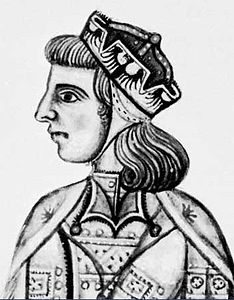
Beatrice di Savoia (Catania, 1223 circa – 1259 circa) principessa di casa Savoia fu regina consorte di Sicilia (1258-1259).
Era figlia del conte di Savoia, d'Aosta e di Moriana, Amedeo IV (figlio del conte Tommaso I) e di Anna o Margherita di Borgogna, figlia di Ugo III di Borgogna e di Beatrice di Albon (1161 - 1228), delfina del Viennois (figlia di Ghigo V di Albon, delfino del Viennois e di Beatrice di Monferrato)[1][2][3][4].
Carlo I d'Angiò (Parigi, 21 marzo 1226 – Foggia, 7 gennaio 1285) conte d'Angiò e del Maine, conte di Provenza e di Forcalquier, fu re di Sicilia, re di Napoli, principe di Taranto, re d'Albania, principe d'Acaia e re titolare di Gerusalemme.
Figlio del re di Francia, Luigi VIII (detto il Leone) e di Bianca di Castiglia, era fratello del re di Francia, Luigi IX (detto il Santo). Conquistò il Regno di Sicilia nel 1266 sconfiggendo a Benevento l'ultimo re svevo, Manfredi di Sicilia. Perse nel 1282 la parte siciliana del Regno in seguito ai Vespri Siciliani, rimanendo peraltro re di Napoli fino alla morte.
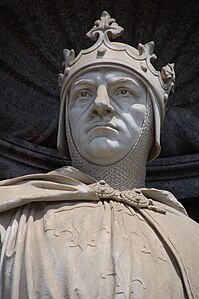
Beatrice (1234 – Nocera Inferiore [1] o Napoli[2], 23 settembre 1267) è stata contessa di Provenza e Forcalquier dal 1245,contessa consorte d'Angiò e del Maine dal 1246, e regina consorte di Sicilia e di Napoli, dal 1266, alla sua morte.
Figlia quartogenita e ultimogenita del conte di Provenza e conte di Forcalquier, Raimondo Berengario IV (1198 – 1245), come riportato dagli Annales Sancti Victoris Massilienses[4] e della moglie, Beatrice di Savoia (1206 – 1266), che, secondo il documento n° 49 del Peter der Zweite Graf von Savoyen, Markgraf in Italien, sein Haus und seine Lande, dello storico, Ludwig Wurstenberger, era figlia del Conte di Savoia, d'Aosta e di Moriana, Tommaso I[5] (1177 – 1233) e della moglie[6], Beatrice Margherita di Ginevra(1180 – 1257), che secondo la Chronica Albrici Monachi Trium Fontium era figlia di Guglielmo I di Ginevra e di Margherita Béatrice di Faucigny[6].

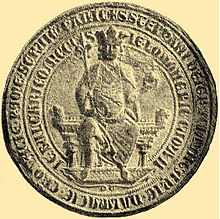
Elisabetta dei Cumani (1240 – 1290/1295) è stata regina d'Ungheria avendo sposato re Stefano V d'Ungheria della dinastia degliArpadi.
Tra i suoi figli vi fu Ladislao IV d'Ungheria.

Bernhard (c. 1140 – 2 February 1212), a member of the House of Ascania, was Count of Anhalt and Ballenstedt, and Lord ofBernburg through his paternal inheritance. From 1180 he was also Duke of Saxony (as Bernhard III or Bernhard I).[1]
Bernhard was the youngest of the seven sons of Albert the Bear (d. 1170), Duke of Saxony from 1138 to 1142 and first Margrave of Brandenburg from 1157, by his wife Sophie of Winzenburg.

Brigitte (or Jutta), a daughter of Canute V of Denmark
Ottone I di Brunswick-Lüneburg (1204 – 1252), detto "Ottone il Fanciullo", fu il primo duca di Brunswick-Lüneburg, dal 1235 al 1252.
Nacque intorno al 1204 da Guglielmo di Winchester, signore di Brunswick, e dalla principessa Elena di Danimarca. Suo nonno paterno eraEnrico il Leone, duca di Sassonia.
Magnus Bengtsson Minnesköld 1150-1220 Bengt Folkesson Snivel y Sigrid Bjørnsdatter Snivil, Lakman
Ingrid Ylva Sunesdotter 1174-1250 Sune Sik Sverkersson y Valevska Sik
Erik Knutsson (? - 10 de abril de 1216). Rey de Suecia entre 1208 y 1216. Era hijo del rey Canuto I de Sueci

Riquilda Valdemarsdatter (fallecida en Ringsted, Dinamarca, 8 de mayo de 1220) fue una princesa danesa y reina consorte de Suecia, tras contraer matrimonio en 1210 con Erik Knutsson. Hija del rey Valdemar I de Dinamarca y de Sofía de Minsk. Debía su nombre a su abuela materna Riquilda de Polonia.

Otto I of Brunswick-Lüneburg (about 1204 – 9 June 1252), a member of the House of Welf, was the first duke of Brunswick-Lüneburg from 1235 until his death. He is called Otto the Child to distinguish him from his uncle, Emperor Otto IV.
Otto was born around 1204 as the only son of William of Winchester and his wife Helena, a daughter of King Valdemar I of Denmark. His father was the youngest son of Henry the Lion, the former Duke of Saxony who had been deposed by theHohenstaufen emperor Frederick Barbarossa in 1180. By an 1202 agreement with his brothers Count Palatine Henry V and King Otto IV, William had received the Welfs' allodial properties in Saxony around Lüneburg.

Matilda of Brandenburg (c. 1210 – 10 June 1261) was a daughter of Albert II, Margrave of Brandenburg, and Matilda of Lusatia.
Alberto III d'Asburgo, anche detto dalla treccia (Vienna, 9 settembre 1348 – Laxenburg, 29 agosto1395), fu duca d'Austria dal 1365 fino alla morte.
Figlio di Alberto II lo Sciancato, succedette nel 1365 al fratello Rodolfo IV d'Asburgo insieme all'altro fratello Leopoldo III d'Asburgo.

Elisabetta di Boemia (Praga, 19 marzo 1358 – Vienna, 4 o 19 settembre 1373) era l'unica figlia femmina nata dal matrimonio dell'imperatore Carlo IV e dalla sua terza moglie Anna di Schweidnitz, sorella dell'imperatore Venceslao.

Alberto I di Wittelsbach (Monaco di Baviera, 25 luglio 1336 – L'Aia, 13 dicembre 1404) fu Duca di Baviera-Straubing, Conte d'Olanda, Hainaut e Zelanda.
aberto era il terzo figlio di Margherita d'Olanda e dell'imperatore Ludovico IV. Fu un reggente feudale della Contea d'Olanda, della Contea di Hainaut, e di quella di Zelanda. Successivamente, nella spartizione della Baviera, aveva ottenuto la provincia di Straubing, successivo appannaggio e sede dei suoi futuri eredi, i Wittelsbach-Hainaut, che da lui trassero origine.

Margherita di Brieg (1342 – 1386) era figlia di Ludovico I il Giusto e di sua moglie Agnese di Sagan.
Carlo IV di Lussemburgo (Praga, 14 maggio 1316 – Praga, 29 novembre 1378) fu Re dei Romani (con il nome di Carlo (Karl) IV dal 1346 al 1378), Imperatore del Sacro Romano Impero (dal 1355 al 1378), Re di Boemia (con il nome di Carlo (Karel) I dal 1346 al1378), Conte Carlo I di Lussemburgo (dal 1346 al 1353) e Margravio del Brandenburgo (dal 1373 al 1378).
Carlo IV, battezzato Venceslao, era figlio di Giovanni di Lussemburgo (detto il cieco), re di Boemia dal 1311 al 1346 e di sua moglie,Elisabetta Přemyslovna, (Eliška) figlia secondogenita di Venceslao Přemysl II di Boemia, della dinastia dei Premyslidi.

Elisabetta di Pomerania (1347 – Hradec Králové, 15 aprile 1393) fu la quarta ed ultima moglie dell'imperatore Carlo IV, che era anche re di Boemia. Era figlia del duca Boghislao V di Pomerania e della moglie Elisabetta di Polonia; erano suoi nonni materni reCasimiro III di Polonia e Aldona di Lituania.

Armando II de Celje (en húngaro: Cillei Hermann, en alemán: Hermann II. von Cilli, en croata: Herman II. Celjski) (c. 1360 –Bratislava, 13 de octubre de 1435), aristócrata húngaro de origen esloveno, conde de Celje, gobernador de la región de Croacia-Eslavonia, heredero al trono bosnio. Suegro, consejero y persona de mayor confianza del rey Segismundo de Hungría(posteriormente también rey de Bohemia y emperador germánico).
Armando II nació cerca de 1360 como hijo de Armando I de Celje (1332/1334 - 1385) y de la princesa bosnia Catalina Kotromanic.

Ana de Schaunberg (c. †1396), hija del conde Enrique VII de Schaunberg
Barnim VI, Duke of Pomerania (c. 1365 – 22 September 1405 in Pütnitz, near Ribnitz-Damgarten) was duke of Pomerania-Wolgast from 1394 to 1405. He was the son of Wartislaw VI of Pomerania-Wolgast.

Veronica of Hohenzollern
Erich IV von Sachen-Lauenburg-Ratzeburg (Askanier), Herzog von Sachsen-Lauenburg-Ratzeburg 1354-1412 Erich II von Sachsen-Lauenburg, Herzog zu Sachsen-Lauenburg-Ratzeburg y Countess Agnes (Holstein)
Sophie von Braunschweig-Lüneburg (Welf), Herzogin zu Sachen-Lauenburg-Ratzeburg 1358-1416 e Magnus II Torquatus, Herzog zu Braunschweig-Lüneburg y Katharina von Anhalt-Bernburg
Bogislaw VIII, Duke of Pomerania 1364-1418 Bogislaw V, duke y Adelheid of Brunswick-Grubenhagen
Sophia of Holstein-Rendsburg (Holstein-Schaumburg), Duchess of Pomerania 1373-1451 Henry II of Holstein-Rendsburg, count yIngeburg von Mecklenburg
Siemowit IV di Masovia (1352 – 1425-26) fu duca di Masovia.
Noto anche come Ziemowit IV, questo duca di Masovia controllava i territori di Czersk, Rawa, Sochaczew, Płock e Gostynin.
Alessandra di Lituania (Vilnius, 1360 (verso la fine del decennio) – Płońsk, 20 aprile 1434) era la figlia più giovane del Granduca di Lituania Algirdas e della sua seconda moglieUliana di Tver'
Luigi I il Grande (Visegrád, 5 marzo 1326 – Nagyszombat, 10 settembre 1382) fu re d'Ungheria dal 1342 al 1382 e re di Poloniadal 1370 al 1382.
Figlio primogenito di Carlo Roberto d'Angiò e di Elisabetta di Polonia

Elisabetta di Bosnia (1340 – Novegradi, 1387) è stata regina consorte del re d'Ungheria e di Polonia e reggente del trono d'Ungheria.
Fu la seconda consorte del re Luigi I d'Ungheria e di Polonia. Figlia di Stefano II di Bosnia e di Sirmia capofamiglia della casata deiKotromanic e pretendente al trono di Serbia, mentre sua madre era Elisabetta di Kujavia, bisnipote di Ladislao I di Polonia.

Federico IV di Norimberga (1287 – 19 maggio 1332) fu Burgravio di Norimberga della dinastia degli Hohenzollern.
Figlio di Federico III e di Elena di Sassonia figlia di Alberto.
Margherita di Carinzia
Berthold von Henneberg-Schleusingen 1271-1340 Berthold V, Graf von Henneberg-Schleusingen y Sophia von Schwarzburg, 2
Adelheid von Hessen (Hessen, Brabant), Gräfin von Henneberg-Schleusingen 1272-1317 Hendrik van Brabant, Landgraf von Hesseny Adelheid von Braunschweig-Lüneburg
Ludovico IV, detto il Bavaro (Monaco di Baviera, 1º aprile 1282 – Fürstenfeldbruck, 11 ottobre 1347), fu duca di Baviera dal 1294,Rex Romanorum dal 1314 e Imperatore del Sacro Romano Impero dal 1328. È sepolto nella Frauenkirche di Monaco di Baviera.

Beatrice di Slesia-Schweidnitz (1290 circa – Monaco di Baviera, 25 agosto 1322) membro della dinastia polacca di Piast, divenne per matrimonio regina dei romani.
Era la figlia secondogenita del duca di Jawor Bolko I e della moglie Beatrice del Brandeburgo (1270 circa - prima del 26 aprile 1316), figlia del Margravio Otto del Brandeburgo (1246circa - 1298)[1]. Fra i fratelli e le sorelle di Beatrice si ricorda Giuditta che divenne la moglie diStefano I di Baviera.

Albert I (German: Albrecht I.) (c. 1175 – 7 October 1260) was a Duke of Saxony, Angria, and Westphalia; Lord of Nordalbingia; Count of Anhalt; and Prince-elector and Archmarshal of the Holy Roman Empire. Even though his grandfather Albert the Bear had held the Saxon dukedom between 1138 and 1142, this Albert is counted as the first.[1]
A member of the House of Ascania, Albert was a younger son of Bernard III, Duke of Saxony, and Brigitte of Denmark, daughter ofCanute V of Denmark.
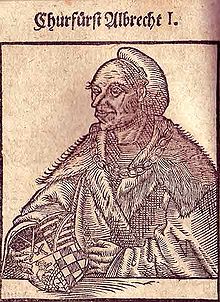
Günther I, count of Lindow
Günther I., Graf von Lindow
† 1284
Marsilio da Carrara
Frederick III of Nuremberg (c. 1220 – 14 August 1297 in Cadolzburg), Burgrave of Nuremberg from the House of Hohenzollern, was the eldest son of Conrad I of Nuremberg and Adelheid of Frontenhausen.
Henry of Carinthia (German: Heinrich von Kärnten, Czech: Jindřich Korutanský, c. 1265 – 2 April 1335), a member of the House of Gorizia (Meinhardiner), became King of Bohemia, Margrave of Moravia and titular King of Poland in 1306 and again from 1307 until 1310. He also was Duke of Carinthia and Margrave of Carniola (as Henry VI) as well as Count of Tyrol from 1295 until his death.
Henry was a younger son of Meinhard II of Görz-Tyrol and Elisabeth of Wittelsbach, daughter of Duke Otto II of Bavari
Adelaide of Brunswick (1285–16 Aug 1324), daughter of the Welf duke Henry I of Brunswick-Grubenhagen.
Berthold Vlll (V) von Henneberg-Schleusingen 1245-84 Heinrich III von Henneberg, Graf von Henneberg-Schleusingen y Sophia Wettin, von Meißen
Sophia von Schwarzburg, 1242-79 Günther Vll von Schwarzburg in Blankenburg, Graf y Sophie von Schwarzburg-Blankenburg

Henry I of Hesse "the Child" (German: Heinrich das Kind) (24 June 1244 – 21 December 1308) was the first Landgrave of Hesse. He was the son of Henry II, Duke of Brabant and Sophie of Thuringia.
Duke Louis II of Bavaria (German: Ludwig II der Strenge, Herzog von Bayern, Pfalzgraf bei Rhein) (13 April 1229 – 2 February 1294) was Duke of Bavaria and Count Palatine of the Rhine from 1253. Born in Heidelberg, he was a son of duke Otto II and Agnes of the Palatinate. She was a daughter of the Welf Henry V, Count Palatine of the Rhine, her grandfathers were Henry XII the Lionand Conrad of Hohenstaufen.

Matilda of Habsburg or Melchilde (Rheinfelden, 1253[1] – Munich, Bavaria, 23 December 1304) was the eldest daughter ofRudolph I of Germany and Gertrude of Hohenburg

Bolko I the Strict also known as the Raw or of Jawor (Polish: Bolko I Surowy[1] or Srogi or Jaworski; 1252/56 – 9 November 1301), was a Duke of Lwówek (Löwenberg) during 1278–81 (with his brother as co-ruler) and Jawor (Jauer) since 1278 (with his brother as co-ruler until 1281), sole Duke of Lwówek since 1286, Duke of Świdnica-Ziębice since 1291.
He was the second son of Bolesław II the Bald, Duke of Legnica by his first wife Hedwig, daughter of Henry I, Count of Anhalt

Beatrice of Brandenburg (Polish: Beatrycze Brandenburska, German: Beatrix von Brandenburg; ca. 1270 – bef. 26 April 1316), was a German princess and a member of the House of Ascania in the Brandenburg branch. By her two marriages she was Duchess of Świdnica and Koźle-Bytom-Siewierz.
She was the second daughter of Otto V the Long, Margrave of Brandenburg-Salzwedel, by his wife Judith of Henneberg, daughter of Count Herman I of Henneberg and heiress of Coburg and Schmalkalden.
Pedro III de Aragón (Valencia, 1240 – Villafranca del Penedés, 11 de noviembre de 1285),1 llamado el Grande, fue hijo de Jaime I el Conquistador y su segunda esposa Violante de Hungría.
Constanza de Sicilia o Constanza de Suabia (Sicilia, 1249 - Barcelona, 1302), reina consorte de Aragón (1276-1302) y reina de Sicilia (1282-1302).
Era hija de Manfredo I de Sicilia y de Beatriz de Saboya. Nieta del emperador Federico II por parte paterna y del conde Amadeo IV de Saboya por parte materna. En 1262 se casó con el infante Pedro, que más tarde se convertiría en el rey Pedro III de Aragón. Este matrimonio, que sellaba la alianza entre Aragón y Sicilia, sirvió de palanca para extender la influencia aragonesa en el Mediterráneo central en perjuicio de los intereses franceses.
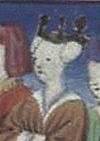
Charles II, called the Lame (French le Boiteux, Italian lo Zoppo; 1254 – 5 May 1309), was King of Naples, King of Albania, Prince of Salerno, Prince of Achaea, Count of Provence and Forcalquier and Count of Anjou.
He was the son of Charles I of Anjou, who had conquered the Kingdom of Naples and Sicily in the 1260s. His mother was Beatrice of Provence.
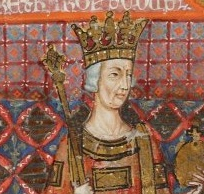
Mary of Hungary (c. 1257 – 25 March 1323), of the Árpád dynasty, was Queen consort of the Kingdom of Naples. She was a daughter of Stephen V of Hungary and his wife Elizabeth the Cuman. Mary served as Regent in Provence in 1290–1294 and in Naples in 1295–96, 1296–98, and 1302, during the absences of her consort.
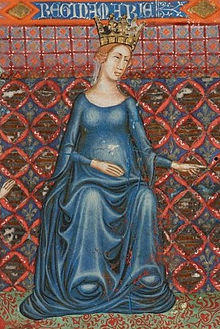
Engelbert I, Count of the Mark (died 16 November 1277 at Castle of Bredevoort) was a German nobleman. He was the rulingCount of the Mark from 1249 until his death.
He succeeded his father, Adolf I as the ruling count in 1249.
Kunigunde of Blieskastel
Adolf VII of Berg (also referred to as Adolf IV, especially in the Netherlands and in Germany) (c. 1220 – 22 April 1259) was the eldest son of Henry IV, Duke of Limburg andIrmgard of Berg.
Margaret of Hochstaden, daughter of Lothar I, Count of Hochstaden
Gerhard I von Arenberg 1225-52 Heinrich III von Arenberg, Burggraf von Köln y Mechtild von Neuenahr
Mechtild von Altena (von Holte) 1225-88 Adolf von Altena, Herr von Holte y Elisabeth von Arnsberg
Wilhelm von Jülich, Graf von Jülich 1218-78 Wilhelm III, count of Jülich y Mathilde van Limburg
Richardis van Gelre 1221-93 e Gerard IV, van Geldre en Zutphen y Margaretha of Brabant
Dietrich VI, also called Dietrich of Meissen, was Count of Cleves from 1260 through 1275. He was the son of Dietrich V, Count of Cleves and Hedwig of Meissen
Alida of Heinsberg, daughter of Henry I of Sponheim and Agnes of Heinsberg.
Eberhard I von Habsburg-Laufenburg, Graf von Habsburg-Laufenburg 1228-84 e Rudolf III, Graf von Habsburg-Laufenburg y Gertrud von Regensburg
Anna von Kyburg 1256-83 e Hartmann V, count of Kyburg y Elisabeth de Châlon
Otto II, Count of Guelders (Dutch: Otto II, Graaf van Gelre) was a nobleman from the 13th century. He was the son of Gerard III, Count of Guelders and Margaretha of Brabant.
Philippe of Dammartin (Philippa de Dammartin) was a 13th-century noble woman. Philippe was the daughter of Simon of Dammartin, Count of Aumâle and his wife Marie of Ponthieu. She was the sister of Joan, Countess of Ponthieu, wife of Ferdinand III of Castile and mother of Eleanor of Castile, the wife of Edward I of England
Guy of Dampierre (Dutch: Gwijde van Dampierre) (c. 1226 – 7 March 1305, Compiègne) was the Count of Flanders (1251–1305) and Marquis of Namur (1268–97). He was a prisoner of the French when his Flemings defeated the latter at the Battle of the Golden Spurs in 1302.
Guy was the second son of William II of Dampierre and Margaret II of Flanders.

Isabelle of Luxembourg (1247–1298) was a daughter of Henry V of Luxembourg and his wife, Margaret of Bar. Isabelle was a member of the House of Luxembourg.
Phillips o Felipe III Duvenvoirde alias Van Polans (c.1248 - después de 1301) fue el primer señor de Polans.
Él era el hijo de Jan van Duivenvoorde, un hijo más joven de Phillips-II Duivenvoorde Wassenaer , que fue el primer señor de Duivenvoorde y por lo tanto progenitor de la Casa Duivenvoorde .
Elizabeth van Vianen
Dirk van Brederode (± 1,256 Santpoort - 16 de de diciembre de 1318 a Reims ), fallecido en el camino de regreso de Palestina .Está enterrado en la iglesia Dominicana en Reims. Apodado El bueno, el Sr. van Brederode (1285), agente judicial de Kennemerland (1288), Knight (1290). Él era un hijo de Willem I van Brederode y Hildegonde Voorne .
Maria van der Lecke (d. En 1 april 1307 ), hija de Enrique II, rey de la Leck y Jutte Borsele .
|
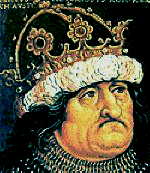
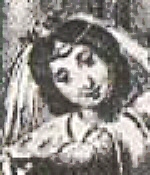




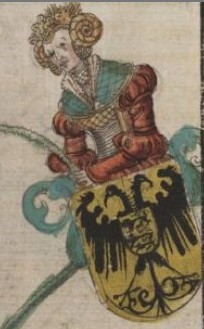

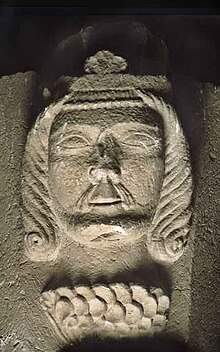
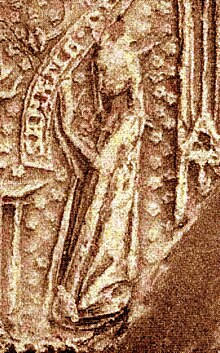
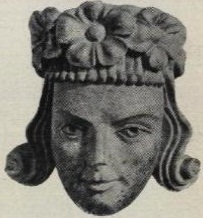






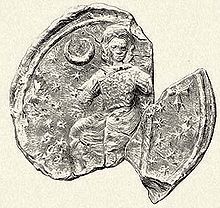
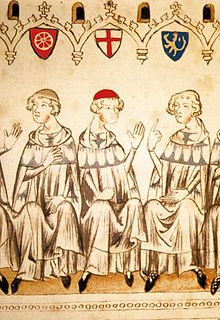

No hay comentarios:
Publicar un comentario